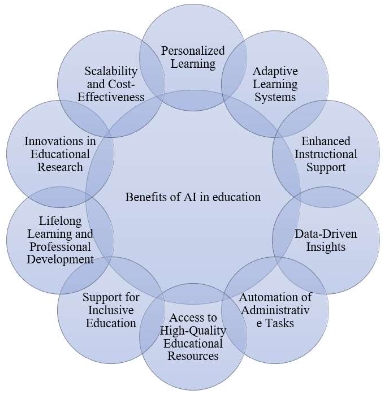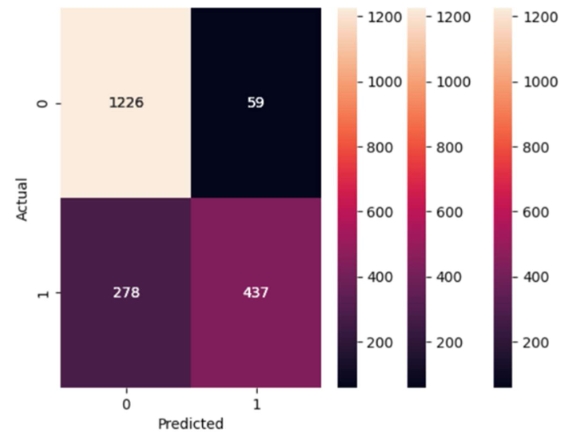Impact of SEL intervention ‘Lead Well’ on teacher SEL development: Insights from a field study
Abstract
Teachers’ social-emotional well-being is crucial for their quality of life. Their well-being is closely associated with the classroom practices, relationships and functioning with students. This study examines the impact of an intervention—‘Lead Well’ on the development of teacher SEL competencies. ‘Lead Well’ is a social-emotional learning (SEL) capacity-building program for teachers, developed by Learning Curve Life Skills Foundation, Hyderabad, India. The program aims to support, develop and promote social emotional well-being among teachers. A single group pretest and posttest design is adopted to conduct this study in Kasturba Gandhi Balika Vidyalaya (KGBV). KGBV schools provide educational facilities for girl students (grades 6–10) belonging to backward classes, minority backgrounds and families below the poverty line in Educationally Backward Blocks. The study was conducted with teachers in the KGBV schools of Vikarabad district. Teachers were provided with the SEL capacity-building program for their own well-being for an academic year. The training was imparted in phases and regular support was provided. An end-line assessment was administered at the end of the academic year. Analysis reported a significant level of improvement in teachers’ SEL competencies (Emotional Intelligence, Engaging the Child, Shaping Attitudes, Mentor Mindset and Learning and Adaptability). The findings provide the empirical evidence on the impact of teacher-focused SEL interventions. It underscores the need for building teachers social-emotional competencies to improve classroom practices.
References
[1]Oliveira S, Roberto MS, Pereira NS, et al. Impacts of Social and Emotional Learning Interventions for Teachers on Teachers’ Outcomes: A Systematic Review with Meta-Analysis. Frontiers in Psychology. 2021; 12(1). doi: 10.3389/fpsyg.2021.677217
[2]Tolan P, Ross K, Arkin N, et al. Toward an integrated approach to positive development: Implications for intervention. Applied Developmental Science. 2016; 20(3): 214–236. doi: 10.1080/10888691.2016.1146080
[3]Durlak JA, Domitrovich CE, Weissberg RP, Gulotta TP. Handbook of Social and Emotional Learning: Research and Practice, 1st ed. The Guilford Press; 2015.
[4]Steinhardt MA, Smith Jaggars SE, Faulk KE, Gloria CT. Chronic work stress and depressive symptoms: Assessing the mediating role of teacher burnout. Stress and Health. 2011; 27(5): 420–429. doi: 10.1002/SMI.1394
[5]Shukla A, Trivedi T. Burnout in Indian teachers. Asia Pacific Education Review. 2008; 9: 320–334. doi: 10.1007/BF03026720
[6]Maslach C, Schaufeli WB, Leiter MP. Job burnout. Annual Review of Psychology. 2001; 52: 397–422. doi: 10.1146/annurev.psych.52.1.397
[7]Schwarzer R, Hallum S. Perceived teacher self-efficacy as a predictor of job stress and burnout: Mediation analyses. Applied Psychology. 2008; 57: 152–171. doi: 10.1111/j.1464-0597.2008.00359.x
[8]Mansfield C, Beltman S, Weatherby-Fell N, Broadley T. Classroom ready? In: Brandenburg R, McDonough S, Burke J, White S (editors). Teacher Education: Innovation, Intervention, and Impact. Springer; 2016. pp. 211–229.
[9]Cipriano C, Brackett M. Teachers Are Anxious and Overwhelmed. They Need SEL Now More Than Ever. Available online: https://www.edsurge.com/news/2020-04-07-teachers-are-anxious-and-overwhelmed-they-need-sel-now-more-than-ever (accessed on 20 November 2024).
[10]Tuxford LM, Bradley GL. Emotional job demands and emotional exhaustion in teachers. Educational Psychology. 2014; 35(8): 1006–1024. doi: 10.1080/01443410.2014.912260
[11]Odak I, Marušić I, Matić Bojić J, et al. Teachers’ social and Emotional Competencies: A lever for social and emotional learning in schools. Sociology and Space. 2023. doi: 10.5673/sip.61.1.5
[12]Frenzel AC, Daniels L, Burić I. Teacher emotions in the classroom and their implications for students. Educational Psychologist. 2021; 56(4): 250–264. doi: 10.1080/00461520.2021.1985501
[13]Lang SN, Jeon L, Sproat EB, et al. Social Emotional Learning for Teachers (SELF-T): A short-term, online intervention to increase early childhood educators’ resilience. Early Education and Development. 2020; 31(7): 1112–1132. doi: 10.1080/10409289.2020.1749820
[14]Jones SM, Bouffard SM. Social and emotional learning in schools: From programs to strategies. Social Policy Report. 2012; 26(4): 3–22. doi: 10.1002/j.2379-3988.2012.tb00073.x
[15]Goddard RD, Hoy WK, Hoy AW. Collective efficacy beliefs: Theoretical developments, empirical evidence, and future directions. Educational Researcher. 2004; 33(3): 3–13. doi: 10.3102/0013189X033003003
[16]Davis HA. Conceptualizing the role and influence of student–teacher relationships on children’s social and cognitive development. Educational Psychologist. 2003; 38(4): 207–234. doi: 10.1207/S15326985EP3804_2
[17]Jennings PA, Frank JL. In-service preparation for educators. In: Durlak JA, Domitrovich CE, Weissberg RP, Gullotta TP (editors). Handbook of Social and Emotional Learning. The Guilford Press; 2015. pp. 422–437.
[18]Sutton RE, Wheatley KF. Teachers’ emotions and teaching: A review of the literature and directions for future research. Educational Psychology Review. 2003; 15: 327–358. doi: 10.1023/A:1026131715856
[19]Oberle E, Domitrovich CE, Meyers DC, Weissberg RP. Establishing systemic social and emotional learning approaches in schools: A framework for schoolwide implementation. Cambridge Journal of Education. 2016; 46(3): 277–297. doi: 10.1080/0305764x.2015.1125450
[20]Jones SM, Bouffard SM, Weissbourd R. Educators’ social and emotional skills vital to learning. Phi Delta Kappan. 2013; 94(8): 62–65. doi: 10.1177/003172171309400815
[21]Jennings PA, Greenberg MT. The Prosocial Classroom: Teacher social and emotional competence in relation to student and classroom outcomes. Review of Educational Research. 2009; 79(1): 491–525. doi: 10.3102/0034654308325693
[22]Merritt EG, Wanless SB, Rimm-Kaufman SE, et al. The contribution of teachers’ emotional support to children’s social behaviors and self-regulatory skills in first grade. School Psychology Review. 2012; 41: 141–159. doi: 10.1080/02796015.2012.12087517
[23]Jackson CK. What do test scores miss? The importance of teacher effects on non-test score outcomes. Journal of Political Economy. 2018; 126(5): 2072–2107. doi: 10.1086/699018
[24]Morgan L, Close S, Siller M, et al. Teachers’ experiences: Social emotional engagement–knowledge and skills. Educational Research. 2021; 64(1): 41–59. doi: 10.1080/00131881.2021.1988865
[25]Duggan EJ. Teacher stress research: A review of the literature. Journal of Psychologists and Counsellors in Schools. 1997; 7(1): 125–136. doi: 10.1017/S103729110000131X
[26]Prilleltensky I, Neff M, Bessell A. Teacher Stress: What it is, why it’s important, how it can be alleviated. Theory Into Practice. 2016; 55(2): 104–111. doi: 10.1080/00405841.2016.1148986
[27]Greenberg MT, Brown JL, Abenavoli RM. Teacher stress and health. Available online: https://www.rwjf.org/en/library/research/2016/07/teacher-stress-and-health.html (accessed on 20 November 2024).
[28]Herman KC, Hickmon-Rosa J, Reinke WM. Empirically Derived Profiles of Teacher Stress, Burnout, Self-Efficacy, and Coping and Associated Student Outcomes. Journal of Positive Behavior Interventions. 2017; 20(2): 90-100. doi: 10.1177/1098300717732066
[29]McCormick J, Barnett K. Teachers’ attributions for stress and their relationships with burnout. International Journal of Educational Management. 2011; 25(3): 278-293. doi:10.1108/09513541111120114
[30]Brady LL, McDaniel SC, Choi YJ. Teacher stress and burnout: The role of psychological work resources and implications for practitioners. Psychology in the Schools. 2022; 60(6): 1706–1726. doi: 10.1002/pits.22805
[31]Gimbert BG, Miller D, Herman E, et al. Social Emotional Learning in schools: The importance of Educator competence. Journal of Research on Leadership Education.2021; 18(1): 3–39. doi: 10.1177/19427751211014920.
[32]Wong VW, Ruble LA, Yu Y, McGrew JH. Too stressed to teach? Teaching quality, student engagement, and IEP outcomes. Exceptional Children. 2017; 83(4): 412–427. doi: 10.1177/0014402917690729
[33]Collie RJ, Shapka JD, Perry NE. School climate and social–emotional learning: Predicting teacher stress, job satisfaction, and teaching efficacy. Journal of Educational Psychology. 2012; 104(4): 1189–1204. doi: 10.1037/a0029356
[34]Montgomery C, Rupp AA. A meta-analysis for exploring the diverse causes and effects of stress in teachers. Canadian Journal of Education. 2005; 28(3): 458–486. doi: 10.2307/4126479
[35]Chang ML. An appraisal perspective of teacher burnout: Examining the emotional work of teachers. Educational Psychology Review. 2009; 21(3): 193–218. doi: 10.1007/s10648-009-9106-y
[36]Milkie MA, Warner CH. Classroom Learning Environments and the Mental Health of First Grade Children. Journal of Health and Social Behavior. 2011; 52(1): 4–22. doi: 10.1177/0022146510394952
[37]de Schipper EJ, Riksen-Walraven JM, Geurts SAE, de Weerth C. Cortisol levels of caregivers in child care centers as related to the quality of their caregiving. Early Childhood Research Quarterly. 2009; 24(1): 55–63. doi: 10.1016/j.ecresq.2008.10.004
[38]Rentzou K. Examination of work environment factors relating to burnout syndrome of early childhood educators in Greece. Child Care in Practice. 2012; 18(2): 165–181. doi: 10.1080/13575279.2012.657609
[39]Zinsser KM, Bailey CS, Curby TW, et al. Exploring the predictable classroom: Preschool teacher stress, emotional supportiveness, and students’ social-emotional behavior in private and Head Start classrooms. NHSA Dialog. 2013; 16(2): 90–108.
[40]Kokkinos CM, Panayiotou G, Davazoglou AM. Correlates of teacher appraisals of student behaviors. Psychology in the Schools. 2005; 42(1): 79–89. doi: 10.1002/pits.20031
[41]Ota CL, Baumgartner JJ, Berghout Austin AM. Provider stress and children’s active engagement. Journal of Research in Childhood Education. 2012; 27(1): 61–73. doi: 10.1080/02568543.2012.739588
[42]Siekkinen M, Pakarinen E, Lerkkanen MK, et al. Social competence among 6-year-old children and classroom instructional support and teacher stress. Early Education & Development. 2013; 24(6): 877–897. doi: 10.1080/10409289.2013.745183
[43]Ramberg J, Låftman SB, Åkerstedt T, Modin B. Teacher Stress and Students’ School Well-being: the Case of Upper Secondary Schools in Stockholm. Scandinavian Journal of Educational Research. 2019; 64(6): 816–830. doi: 10.1080/00313831.2019.1623308.
[44]Oberle E, Schonert-Reichl KA. Stress contagion in the classroom? The link between classroom teacher burnout and morning cortisol in elementary school students. Social Science & Medicine. 2016; 159: 30–37. doi: 10.1016/j.socscimed.2016.04.031
[45]Jeon L, Ardeleanu K. Work Climate in Early Care and Education and Teachers’ Stress: Indirect Associations through Emotion Regulation. Early Education and Development. 2020; 31(7): 1031–1051. doi: 10.1080/10409289.2020.1776809
[46]Steiner ED, Doan S, Woo A, et al. Restoring Teacher and Principal Well-Being is an Essential Step for Rebuilding Schools: Findings from the State of the American Teacher and State of the American Principal Surveys. Available online: https://doi.org/10.7249/rra1108-4 (accessed on 20 November 2024).
[47]Penttinen V, Pakarinen E, Von Suchodoletz A, Lerkkanen MK. Relations between Kindergarten Teachers’ Occupational Well-being and the Quality of Teacher-child Interactions. Early Education and Development. 2020; 31(7): 994–1010. doi: 10.1080/10409289.2020.1785265
[48]Jennings PA, Brown JL, Frank JL, et al. Impacts of the CARE for Teachers Program on Teachers’ Social and Emotional Competence and Classroom Interactions. Journal of Educational Psychology. 2017; 109(7): 1010–1028. doi: 10.1037/edu0000187
[49]Hamre BK, Pianta RC. Student-Teacher Relationships. In: Bear GG, Minke KM (editors). Children’s Needs III: Development, Prevention, and Intervention. National Association of School Psychologists; 2006. pp. 59–71.
[50]Domitrovich CE, Bradshaw CP, Berg JK, et al. How do school-based prevention programs impact teachers? Findings from a randomized trial of an integrated classroom management and social-emotional program. Prevention Science. 2016; 17: 325–337. doi: 10.1007/s11121-015-0618-z
[51]Schonert-Reichl KA. Social and emotional learning and teachers. The Future of Children. 2017; 27(1): 137–155. doi: 10.1353/foc.2017.0007
[52]Domitrovich CE, Durlak JA, Staley KC, Weissberg RP. Social-Emotional Competence: An Essential Factor for Promoting Positive Adjustment and Reducing Risk in School Children. Child Development. 2017; 88(2): 408–416. doi: 10.1111/cdev.12739
[53]Durlak JA, Weissberg RP, Dymnicki AB, et al. The impact of enhancing students’ social and emotional learning: A meta-analysis of school-based universal interventions. Child Development. 2011; 82(1): 405–432. doi: 10.1111/j.1467-8624.2010.01564.x
[54]Sklad M, Diekstra R, de Ritter M, et al. Effectiveness of school-based universal social, emotional, and behavioral programs: Do they enhance students’ development in the area of skill, behavior, and adjustment? Psychology in the Schools. 2012; 49(9): 892–909. doi: 10.1002/pits.21641
[55]Wigelsworth M, Lendrum A, Oldfield J, et al. The impact of trial stage, developer involvement and international transferability on universal social and emotional learning program outcomes: A meta-analysis. Cambridge Journal of Education. 2016; 46(3): 347–376. doi: 10.1080/0305764X.2016.1195791
[56]Collaborative for Academic, Social, and Emotional Learning (CASEL). The CASEL guide to schoolwide social and emotional learning. Available online: https://schoolguide.casel.org/ (accessed on 20 November 2024).
[57]Delpit L. Other people’s children: Cultural conflict in the classroom. New Press; 2006.
[58]Jennings PA, Minnici A, Yoder N. Creating the working conditions to enhance teacher social and emotional well-being. In: Osher D, Mayer M, Jagers R, et al. (editors). Keeping students safe and helping them thrive: A collaborative handbook on school safety, mental health, and wellness. Praeger; 2019. pp. 210–239.
[59]Collaborative for Academic, Social, and Emotional Learning (CASEL). Key insights from the collaborating districts initiative. Available online: https://drc.casel.org/uploads/sites/3/2019/02/Key-Insights-from-the-Collaborating-Districts-Initiative.pdf (accessed on 20 November 2024).
[60]Greenberg MT, Weissberg RP. Social and emotional development matters: Taking action now for future generations. University Park: Edna Bennett Pierce Prevention Research Center, Pennsylvania State University; 2018. Available online: https://prevention.psu.edu/publication/social-and-emotional-development-matters-taking-action-now-for-future-generations/ (accessed on 20 November 2024).
[61]Hemmeter ML, Ostrosky M, Fox L. Social and emotional foundations for early learning: A conceptual model for intervention. School Psychology Review. 2006; 35(4): 583–601.
[62]Klassen RM, Perry NE, Frenzel AC. Teachers’ relatedness with students: An underemphasized component of teachers’ basic psychological needs. Journal of Educational Psychology. 2012; 104(1): 150–165.
[63]Onchwari J. Early childhood in-service and preservice teachers’ perceived levels of preparedness to handle stress in their students. Early Childhood Education Journal. 2010; 37(5): 391–400.
Copyright (c) 2025 Author(s)

This work is licensed under a Creative Commons Attribution 4.0 International License.









